A small of mass m starts from rest at the position shown and slides along the frictionless loop the loop track of radius R. What is the smallest value of y such that the object will slide without losing contact with the track?

R/2
R
R/4
3R/4
The correct Answer is:A
Step by step video, text & image solution for A small of mass m starts from rest at the position shown and slides along the frictionless loop the loop track of radius R. What is the smallest value of y such that the object will slide without losing contact with the track? by Physics experts to help you in doubts & scoring excellent marks in Class 12 exams.
Topper's Solved these Questions
Similar Questions
A block of mass m starts from rest and slides down a frictionless semi-circular track from a height h as shown. When it reaches the lowest point of the track, it collides with a stationary piece of putty also having mass m. If the block and the putty stick together and continue to slide, the maximum height that the block-putty system could reach is
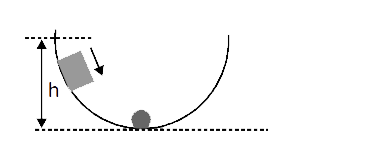 View Solution
View SolutionA small block of mass m slides along a frictionless loop-the-loop (loop inside loop) track. What should be the ratio of the radius of the outer loop to the radius of the inner loop so that the the block may not lose contact at the highest point of the inner loop ?
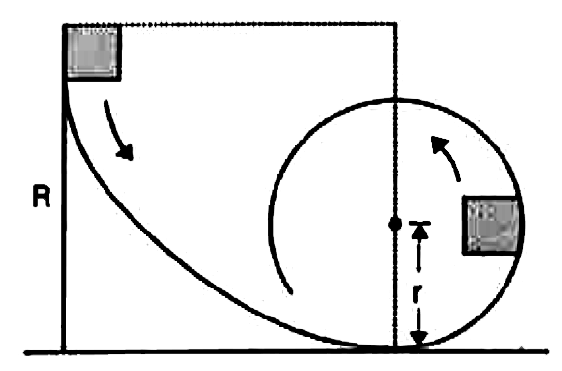 View Solution
View Solution
Knowledge Check
- Question 1 - Select One
A small object of mass m starts from rest at the position shown and slides along the fricationless loop-the -loop track of radius R. What is the smallest value of y such that the object will slide without losing contact with the track?
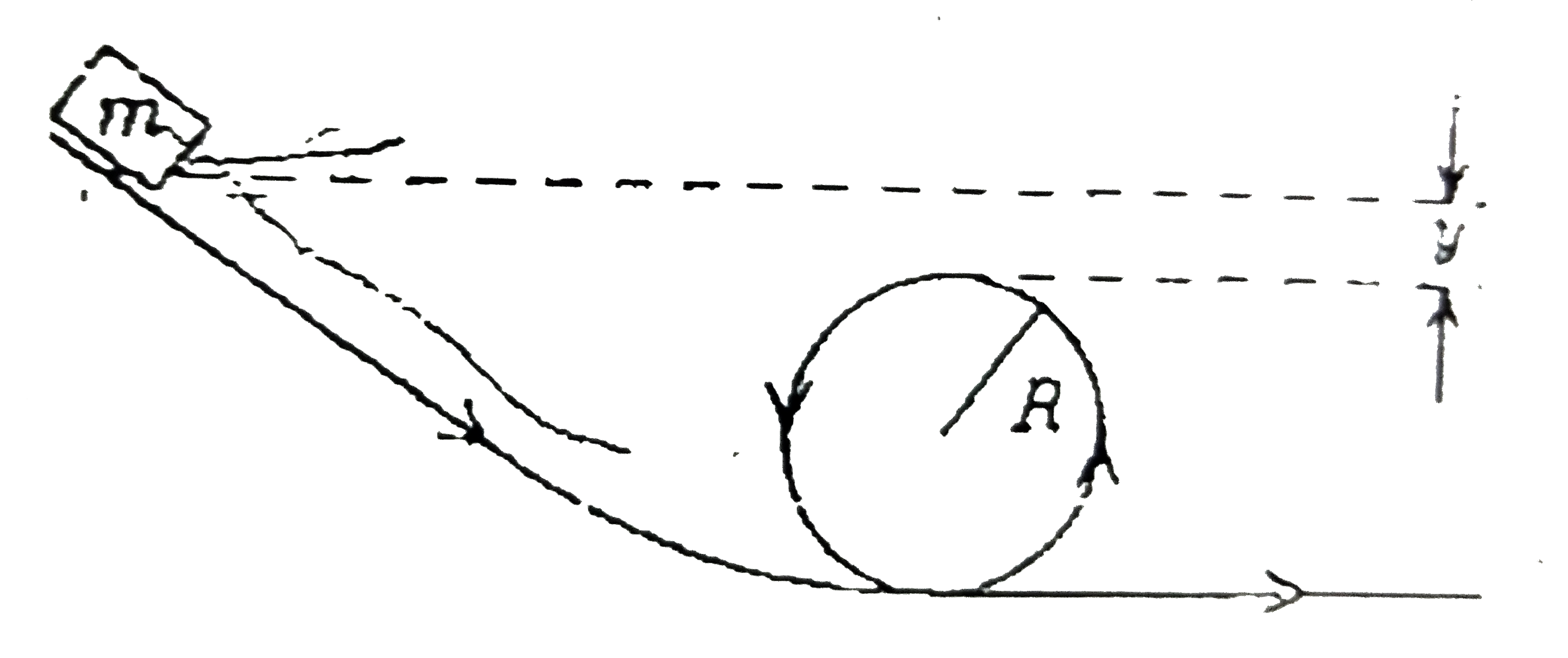 AR/4BR/2CRD2R
AR/4BR/2CRD2R - Question 2 - Select One
A block of mass m starts from rest and slides down a frictionless semi-circular track from a height h as shown. When it reaches the lowest point of the track, it collides with a stationary piece of putty also having mass m. If the block and the putty . stick together and continue to slide, the maximum height that the block-putty system could reach is
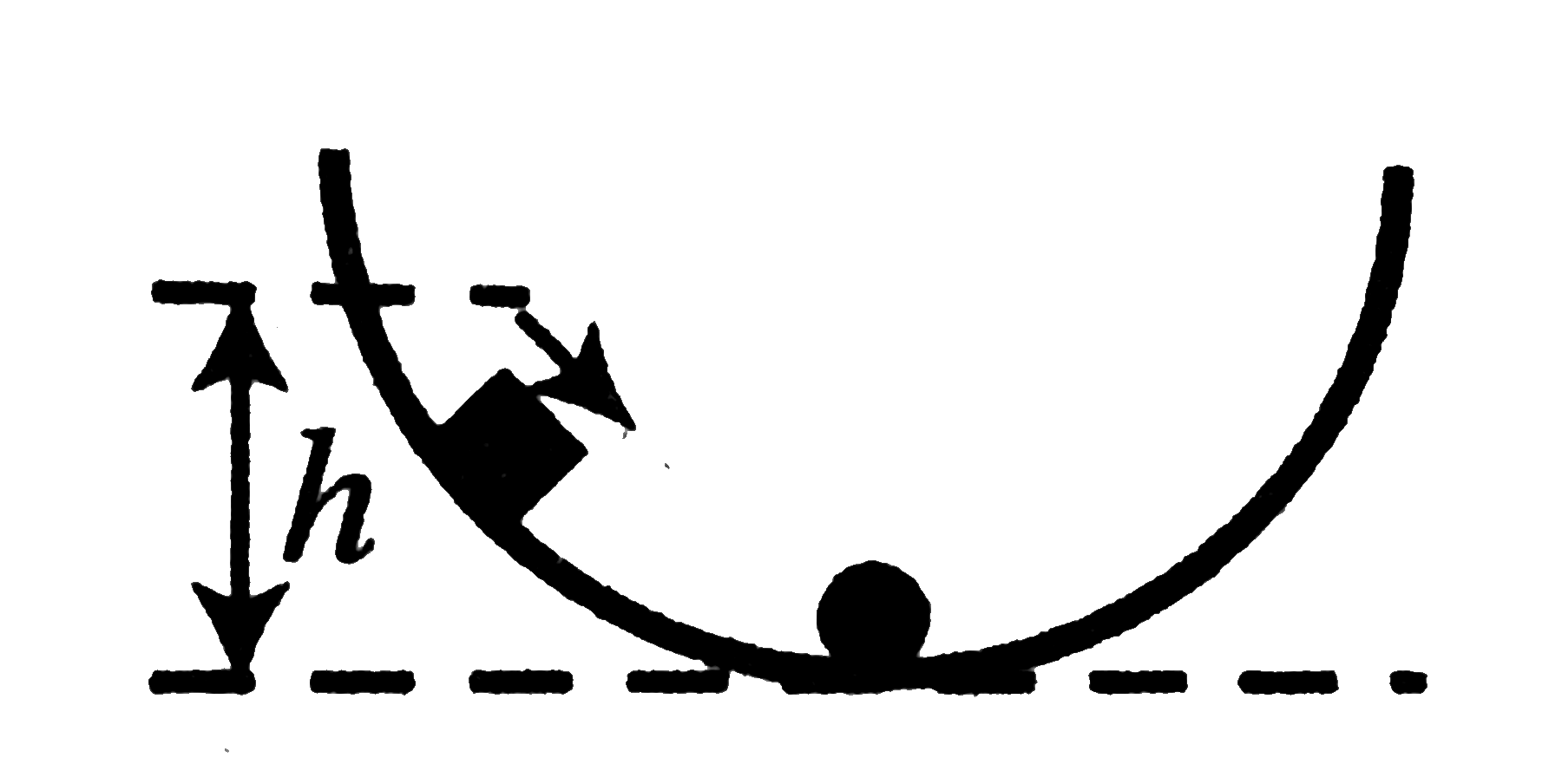 Ah4Bh2ChDindependent of h
Ah4Bh2ChDindependent of h - Question 3 - Select One or More
A 1000 kg car starts from rest at point 1 and moves without friction down the track as shown in the figure. At point 2, the radius od curvature of the track is 6m.
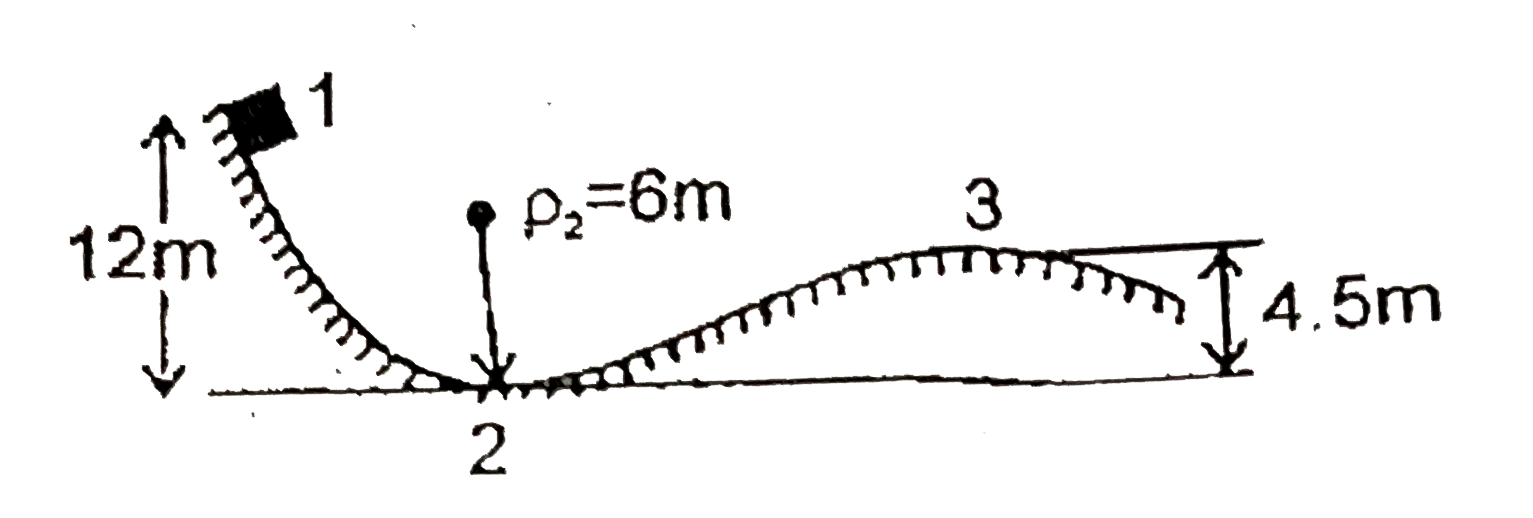 Athe force exerted by the track on the car at point 2 is 4000 kg wtBthe force exerted by the track on the car at point 2 is 5000 kg wtCthe minimum safe value of the radius of curvature at point 3 is 15 mDthe minium safe value of the radius of curvature at point 3 is 10 m
Athe force exerted by the track on the car at point 2 is 4000 kg wtBthe force exerted by the track on the car at point 2 is 5000 kg wtCthe minimum safe value of the radius of curvature at point 3 is 15 mDthe minium safe value of the radius of curvature at point 3 is 10 m
A block of mass M with a semi circular track of radius R, rests on a horizontal frictionless surface. A uniform cylinder of radius r and mass m is released from rest at the top point A. The cylinder slips on the semicurcular frictionless track. How far has the block moved when the cylinder reaches the bottom of the track ? How fast is the block moving when the cylinder reaches the bottom of the track ?
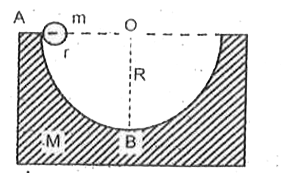 View Solution
View SolutionFigure shows a an incline which ends into a circular track of radius R. What should be the minimum value of height (h), so that the small object shown after release, is able to complete the loop. Neglect friction.
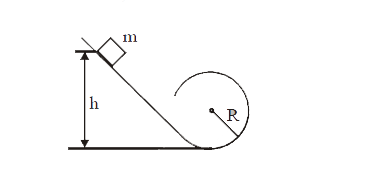 View Solution
View SolutionAn 900−kg roller-coaster car is launched from a giant spring of constant k=31kN/m into a frictionless loop-the-loop track of radius 6.2 m as shown in Figure. What is the minimum amount that the spring must be compressed if the car is to stay on the track ?
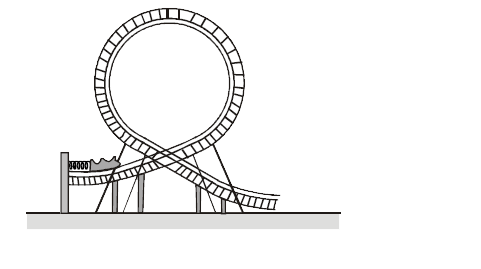 View Solution
View SolutionA block of mass M with a semicircualr of radius R, rests on a horizontal frictionless surface. A uniform cylinder of radius r and mass m is released from rest the top point A The cylinder slips on the semicircular frictionless track. How far has the block moved when the cylinder reaches the bottom (point B) of the track ? How fast is the block moving when the cylinder reaches the bottom of the track?
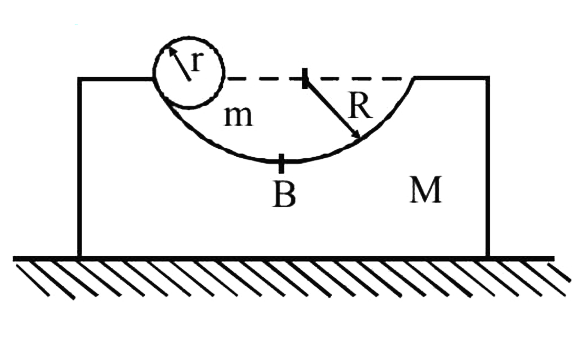 View Solution
View SolutionIn the figure, the block B of mass m starts from rest at the top of a wedge W of mass M. All surfaces are without friction. W can slide on the ground. B slides down onto the ground, moves along it with a speed v, has an elastic collision with the wall, and climbs back on to W.
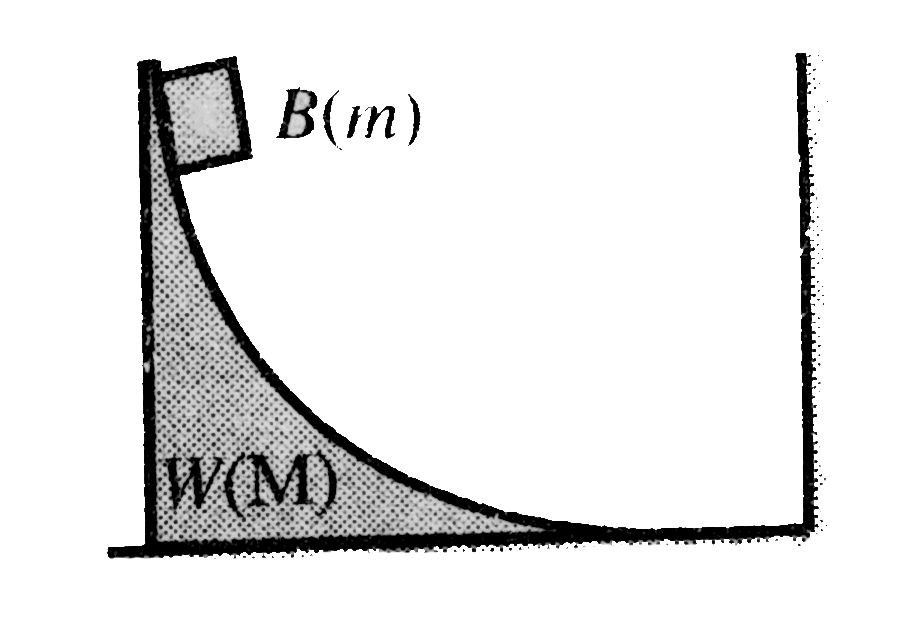 View Solution
View Solution

